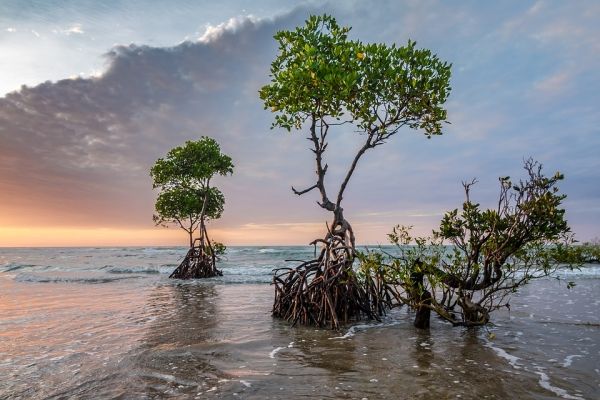In a new paper published in the Journal of Applied Ecology, environmental science and management professor Elise Granek and lead author Casey Lewis, PSU alumna, report the findings of a census of zooplankton communities in non-native mangrove habitats and open coastline on the island of Moloka'i, Hawaii. The study found the diversity of zooplankton communities in mangrove stands was comparable to that of the open coast. Additionally, the authors report that while they found some species to be less abundant in mangrove sites, other rare species were only present in mangrove habitats. The findings suggest that the non-native mangroves may benefit, rather than impede, zooplankton, many of which are important species in the ecosystems they inhabit.
The paper's implications suggest that faced with declining fisheries, threatened reef ecosystems, and changing climatic and oceanic conditions, the value of ecosystem services provided by some invasive species, e.g., mangroves, may outweigh their negative effects. Therefore, the decision-making process involved in managing some invasive species warrants more careful consideration of both costs and benefits provided to the ecosystem.
"In a static world, invasive species are bad because they disrupt ecosystems," Granek said. "But we're living in a world where the environment is changing. The climate is changing. The oceans are changing. That changes the calculus of how bad some invasive species are to the habitats they've been introduced into."
Granek is a marine ecologist and manages the Applied Coastal Ecology lab at Portland State University. Granek's lab investigates how coastal processes are affected by disturbances such as invasive species and pollutants.
Read more at Portland State University
Photo Credit: Patjosse via Pixabay


